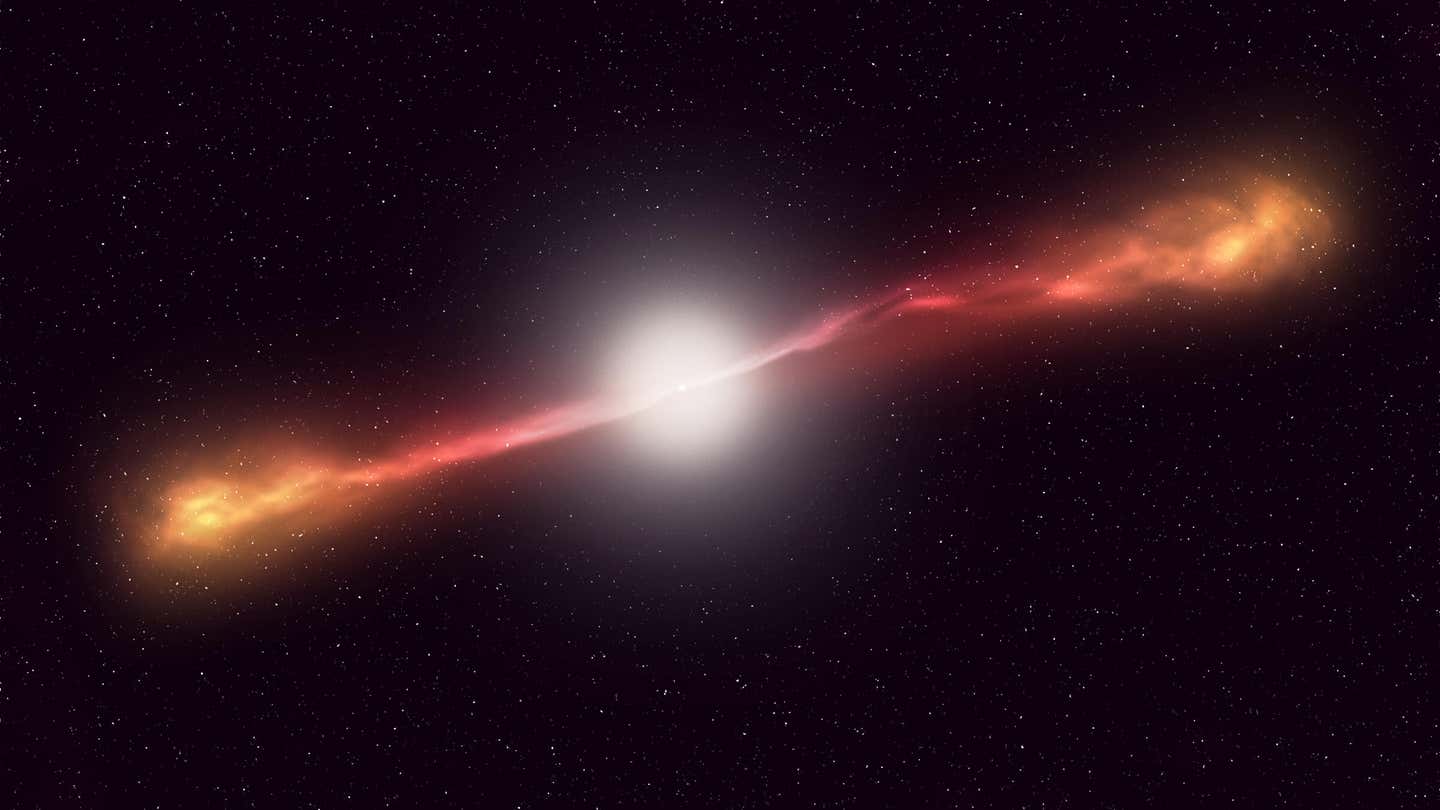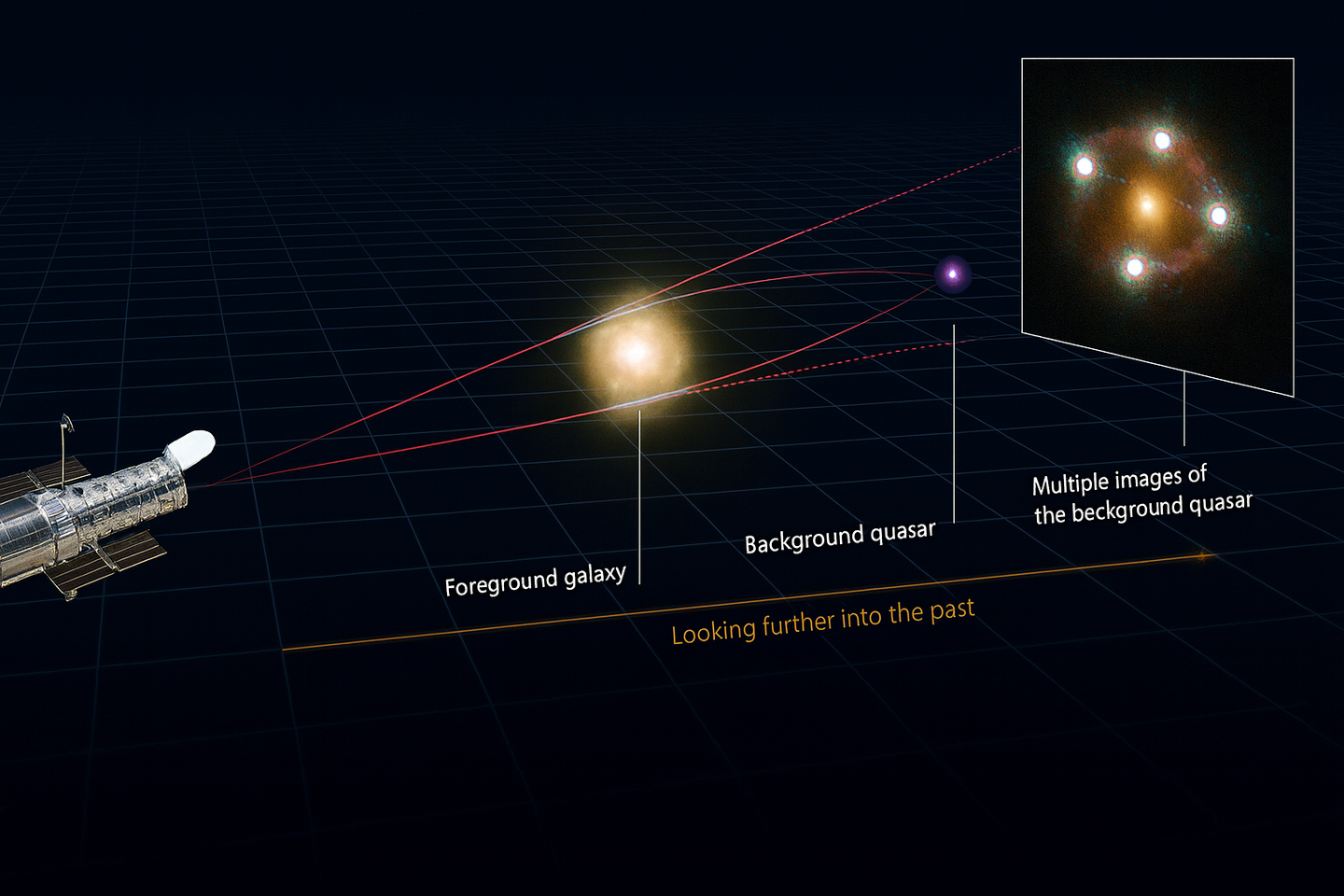Black holes could reveal the universe’s most hidden particles – possibly even dark matter
Research reveals that fast-spinning black holes could smash particles together with energies rivaling or exceeding Earth’s largest colliders.

Artist’s conception of a supermassive black hole, billions of times more massive than the sun, like those found at the centers of galaxies. (CREDIT: Roberto Molar Candanosa / Johns Hopkins University)
A black hole is more than just a region of space where nothing escapes. It can also become a powerful cosmic engine. When matter spirals inward, falling into its grasp, the black hole doesn't just grow in mass—it spins faster. If this happens fast enough, the black hole can rotate near its theoretical speed limit. That spin, combined with incoming material, sets the stage for something astonishing: collisions so violent they could reveal the universe’s most hidden particles—possibly even dark matter.
How a Black Hole Spins Up
When matter falls toward a black hole, it usually forms a flat, rotating disk. This disk transfers both mass and energy to the black hole. Over time, the black hole’s rotation—called spin—can increase dramatically. According to models, a non-rotating black hole can reach near-maximal spin as it grows to roughly 2.45 times its original mass. This happens over a timescale of about 10 million years, known as the Salpeter time.
Not every black hole spins the same. Some rotate slowly, while others, especially those in galactic centers or x-ray binary systems, spin at speeds close to the theoretical limit. This suggests that many of these massive black holes have experienced long periods of smooth, steady feeding from their surroundings.
But black holes aren’t always active. Sometimes they lie dormant, having consumed all nearby material. When new gas arrives—perhaps from a disrupted star—it may not follow the same direction as before. In fact, the new flow can spin in the opposite direction. This matters, because how the material moves relative to the black hole’s spin changes how close it can get and how fast it plunges inward.
Collisions Near the Event Horizon
When matter gets very close to a fast-spinning black hole, especially if it moves opposite to the black hole’s spin, strange things happen. The orbits become unstable. The infalling material, now swirling in reverse, can dive inward from a much farther distance than if it had been moving with the spin. This creates a long fall toward the event horizon—the black hole’s point of no return—giving particles more time and space to accelerate.
At these near-horizon scales, if a falling particle hits another one coming from far away, the energy released in their collision can be massive. The center-of-mass energy can exceed 100 times the mass of a single particle. In extreme cases, this energy grows as the black hole’s spin approaches its maximum. This is the Bañados-Silk-West (BSW) effect, and it's been the subject of intense research. Scientists believe these collisions might reach energies higher than anything created on Earth.
Related Stories
Nature’s Hidden Particle Accelerator
This idea isn't just science fiction. A recent study led by Dr. Andrew Mummery and Joseph Silk suggests that nature has already built the most powerful particle collider imaginable—deep in space, at the heart of galaxies.
“We figured out how energetic these beams of particles could be,” said Silk, an astrophysics professor at Johns Hopkins University and the University of Oxford. “As powerful as you get from a supercollider, or more.”
Their findings, published in Physical Review Letters, suggest that under the right conditions, supermassive black holes can create particle collisions as energetic as those inside the Large Hadron Collider (LHC)—or even more powerful.
This cosmic version of a collider doesn't require billions of dollars or decades of construction. All it needs is a fast-spinning black hole, a steady flow of gas, and time.
“At the energy levels we’re talking about, some particles from these collisions go down the throat of the black hole and disappear forever,” Silk explained. “But some also come out, and it’s those that come out which are accelerated to unprecedentedly high energies.”
Why This Matters for Dark Matter
Dark matter makes up about 85% of the universe’s mass, but it hasn’t been directly observed. Scientists have tried to create and detect it using particle colliders like the LHC. So far, no luck. The LHC, built beneath the border of France and Switzerland, is a 17-mile-long tunnel that accelerates protons close to the speed of light. It has already revealed new particles and reshaped modern physics. But building an even more powerful version may cost up to $30 billion and take 40 years.
That’s why Silk and others believe black holes might provide a natural shortcut.
“One of the great hopes for particle colliders like the LHC is that it will generate dark matter particles, but we haven’t seen any evidence yet,” Silk said. “As we invest $30 billion and wait 40 years to build this supercollider—nature may provide a glimpse of the future in supermassive black holes.”
If these cosmic collisions produce particles that travel through space, some might eventually hit Earth. Facilities like the IceCube Neutrino Observatory in Antarctica or the KM3NeT telescope under the Mediterranean Sea are already watching for high-energy particles from space. These detectors recently found the most energetic neutrino ever recorded. Similar particles, shot out from black holes, could carry the signature of new physics—perhaps even dark matter.
“The difference between a supercollider and a black hole is that black holes are far away,” Silk said. “But nevertheless, these particles will get to us.”
The Road Ahead
While the math and theory are compelling, scientists still face one major challenge: finding a consistent way to load black holes with the right kinds of particles. It’s not enough for collisions to happen—they need to happen in a way that creates detectable signals.
That’s why the new study focused on a specific and likely scenario: retrograde accretion. When material falls into a spinning black hole in the opposite direction of its rotation, it plunges in with extra energy. These gas flows provide a constant stream of fast-moving particles. If these meet others falling from space, the resulting collisions could hit center-of-mass energies in the 1 to 100 TeV range—comparable to the energy of particle beams in supercolliders.
At moderate feeding rates, the particle flow into the black hole’s ergosphere—the twisted region just outside the event horizon—could be as high as 10⁴⁴ particles per second for a black hole with mass similar to our Sun. That means a vast number of collisions, each potentially carrying clues about particles that science has yet to discover.
It’s a remarkable idea: the darkest objects in the universe could shine the brightest light on its hidden parts. If the models hold true, telescopes might someday detect particles flung from these cosmic engines, carrying messages from the edge of spacetime.
Note: The article above provided above by The Brighter Side of News.
Like these kind of feel good stories? Get The Brighter Side of News' newsletter.



